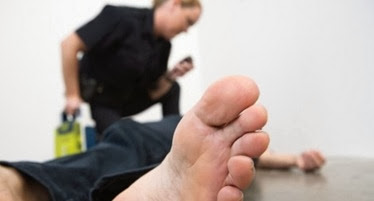Sponsored Post
 In recognition of the risk of Legionnaires’ disease associated with workplace cooling systems, the Health and Safety Executive (HSE) plans to inspect around 5000 sites with such systems over the next 6 months.
In recognition of the risk of Legionnaires’ disease associated with workplace cooling systems, the Health and Safety Executive (HSE) plans to inspect around 5000 sites with such systems over the next 6 months.
A cooling system may consist of a cooling tower, evaporative condenser or other cooling element, together with the associated pipe work, heat exchanger, pumps, supply tanks and pre-treatment equipment.
Legionellosis is the collective name given to the pneumonia-like illness caused by legionella bacteria. This includes the most serious Legionnaires’ disease, as well as the less serious Pontiac fever and Lochgoilhead fever. Legionnaires’ disease is a potentially fatal form of pneumonia and everyone is susceptible to infection. However, people over 45 years of age, smokers, heavy drinkers, those suffering from chronic respiratory or kidney disease and anyone with an impaired immune system are at the greatest risk.
The bacterium Legionella pneumophila and related bacteria are common in natural water sources such as rivers, lakes and reservoirs, but usually in low numbers. They may also be found in purpose-built water systems such as cooling towers and evaporative condensers.
There is a reasonably foreseeable legionella risk in water systems which:
- have a water temperature between 20–45 °C
- creates and/or spreads breathable droplets, e.g. aerosol created by a cooling tower, or water outlets
- stores and/or re-circulates water
- is likely to contain a source of food for the organism, e.g. presence of sludge, scale or fouling
As a result, the conditions found in workplace cooling systems can allow naturally-present bacteria to grow considerably, thereby increasing the risks of Legionnaires ’ disease. Consequently, it’s vital to take precautions to manage the risk of a serious bacteria outbreak developing.
The HSE’s intervention programme has come about as a result of concerning numbers of Legionnaire’s outbreaks over the last decade. Fostering greater awareness of the risk associated with workplace cooling systems is very much at the heart of the programme.
The HSE advises workplaces which have cooling towers or evaporative condensers to should put in place suitable measures mitigate the risk of legionella. Information on the way to manage these risk are described in Legionnaires’ disease: The control of Legionella bacteria in water systems.
This document outlines the requirements for all workplaces to follow in respect of their cooling systems which present a Legionnaires’ risk. It includes information on the commissioning, operation and maintenance of cooling systems, what steps can be taken to combat the presence of high levels of legionella bacteria, and details suitable monitoring systems and processes which can be deployed.
Remedial measures taken to guard against Legionnaire’s disease do not necessarily mean the relevant cooling system must be replaced. For example, Covac's Tank Relining allows for an existing water tank to remain in use and brings with it the assurance of the Covac brand.







